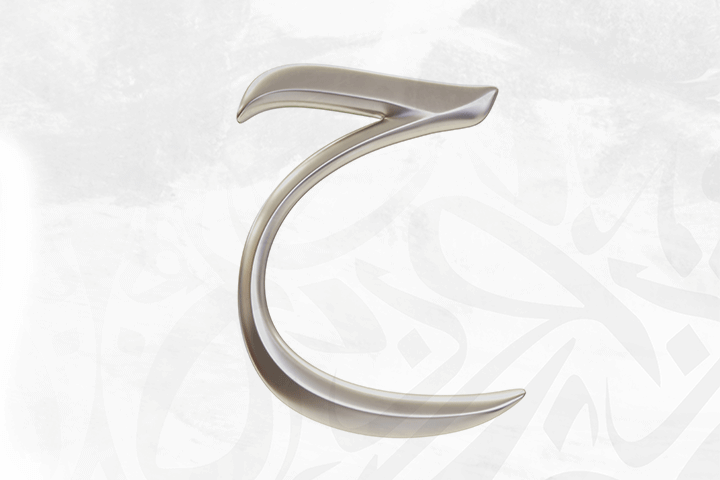Are you ready to learn one of the most important and beautiful letters in the Arabic language? The letter Haa (ح) is unique because its sound doesn’t exist in English. Don’t worry, with a little practice, you’ll master this letter and its sound. Let’s explore everything you need to know about the Arabic letter “ح” (Haa).
Haa in Arabic: The Pronunciation
The pronunciation of the letter Haa is a soft, guttural sound that comes from the back of your throat. To make the sound, imagine you are trying to fog up a mirror with your breath or trying to clear your throat. This sound is a “voiceless pharyngeal fricative,” meaning it is produced from deep in the throat without using your vocal cords. This is the key difference from other “H” sounds in Arabic.
How to Write the Arabic Letter “ح”
The letter Haa (ح) belongs to a special group of letters that share a similar body shape: Jeem (ج) and Khaa (خ). The only thing that distinguishes them is the dot. Haa (ح) is the one with no dots at all!
Writing the Letter: Writing the letter Haa is simple. It’s the same curved shape as Jeem but without the dot.
Like most Arabic letters, Haa changes its shape depending on its position in a word. There are four main forms:
- Isolated Form: ح
- Initial Form: حـ
- The letter ح in the middle (Medial Form): ـحـ
- The letter ح at the end (Final Form): ـح
Examples of Words with Haa’ (ح)
Let’s look at some words that contain the letter Haa in its different shapes:
- Darling – حَبِيب (Habib)
- Bag – حَقِيبَة (Haqibah)
- Garden – حَدِيقَة (Hadeeqah)
- Love – مَحَبَّة (Mahabbah)
- Clouds – سَحَاب (Sahab)
- Correct – صَحِيح (Sahih)
- Wind – رِيح (Reeh)
- Joy – فَرَح (Farah)
- Key – مِفْتَاح (Miftah)
- Place/Store – مَحَلّ (Mahall)
Simple Phrases with Haa’
Using words in simple phrases helps you understand their meaning and usage in context.
- Life is beautiful – الحياة جميلة. (Al-hayaah jameelah)
- This is correct – هذا صحيح. (Hadha saheeh)
- I love coffee – أنا أحب القهوة. (Ana uhibb al-qahwah)
Challenges most faced with “ح”
The biggest challenge for non-native speakers is producing the Haa sound correctly from the throat, as this sound does not exist in English. It is also crucial to distinguish it from the light Ha (ه) sound, which is produced with a relaxed throat, like the “h” in the English word “hello.”
This distinction is very important for correct pronunciation, as using the wrong sound can change the meaning of a word. For example:
- “He solved” or “He untied” – حَلَّ (Halla)
- “He appeared” or “He came forth” – هَلَّ (halla)
By practicing the throaty sound regularly and paying close attention to words with ح, you can avoid these common mistakes.
Conclusion
Congratulations on taking on the challenge of the letter Haa (ح)! Now you know its unique sound, how to write it, and its different forms. Remember to practice the throaty sound regularly. With a little practice, you’ll be able to read and write words with this important Arabic letter. Keep going! Your dedication to learning Arabic will open a new world of opportunities. For a fun and easy way to continue your learning, you can use the Kaleela app.



